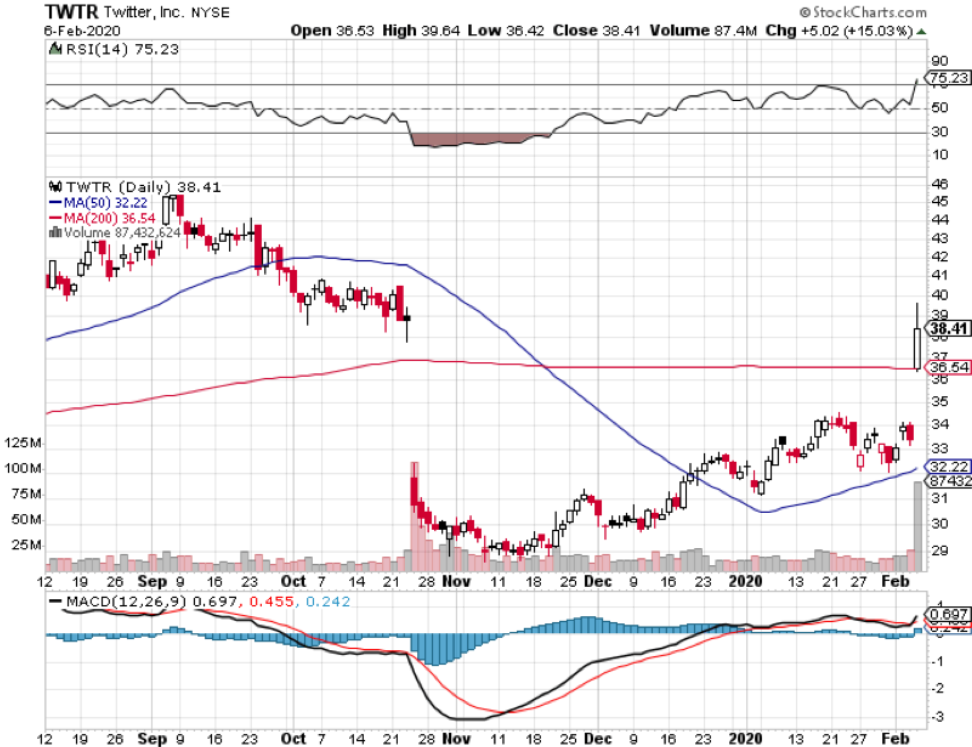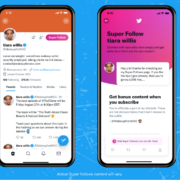Twitter's Growth Doesn't Disappoint
Twitter is one of my favorite 2nd tier tech stocks and readers should get into this name on any meaningful dip.
Ironically, “growth” still matters for this company, but it is also profitable which partly offsets investor’s lust for pure user growth.
Remember in the Pre-WeWork apocalypse era, every tech firm was expected to grow irrespective of whether the growth was quality or septic.
Well, Twitter’s financials make sense in many ways and they also benefit from scarcity value.
There is simply no other company that does what Twitter does.
The company has also cleaned up its userbase purging the toxic elements that roil the good spirit of network communication and the trust in the platform, but this could still be improved on.
Nefarious chatbots, fake accounts, deep fakes, and bad actors are actively banished from the platform, and I can confirm that Twitter does a lot more than Facebook on this front.
Buttressed by a string of continuous profitable quarters, Twitter celebrated its best user growth quarter ever.
Even though they fell short on earnings per share, shares were up a Himalayan 17% intraday.
EPS was slightly lower than expected by 4 cents but the 25 cents per share is not the end of the world because Twitter’s mojo doesn’t come in the form of profits.
A more critical milestone was overall top line revenue that saw Twitter finally surpass the $1 billion mark at $1.01 billion vs. $996.7 million expected.
Twitter is finally becoming a big company and will benefit from the network effects and advantages offered to these precious few.
The highlight of the report was easily the Monetizable Daily Active Users (mDAUs) of 152 million which was 5 million more than expected.
The 21% mDAUs expansion is the number that shines brightest and it’s only the third time Twitter has reported mDAUs alone, rather the industry-standard monthly active users (MAUs) it previously reported.
Twitter certainly is still in hyper-growth mode as the company announced plans to build a new data center and add headcount by 20% during the year, which would be about 960 employees on top of the 4,800 it employed by the end of 2019.
Twitter CFO Ned Segal said, “When you add 26 million people to the service when more than half of it is tied directly to product improvements, you build a confidence to continue to execute against your strategy and the execution we’ve been able to deliver over the last few years.”
CEO of Twitter Jack Dorsey plans to work remotely later this year; addressed his previously announced plans to move to Africa for up to six months while running the business, he said he test ran a heavy travel schedule last year and management was able to keep up with the work.
Twitter dropped 20% on the last earnings report due to issues with its Mobile Application Promotion (MAP) product that damaged its ability to target ads and share measurement data with partners, but the bleed-over effect has been largely dealt with.
The technical issue resulted in a short-term 4% revenue drop and guidance won’t be affected moving forward.
Twitter will also carry out an ad server revamp in the first half of 2020 because advertiser sentiment remains strong.
Total ad engagements grew 29% in the quarter driven by improved clickthrough rates and increased impressions due to audience growth.
Cost per engagement fell 13% because of the shift to video ad formats.
Twitter continued to take the moral high road by eliminating political ads because management said it would not be “credible” for Twitter to convince users it’s committed to preventing the spread of misinformation while allowing advertisers to pay the company to target users with political ads.



